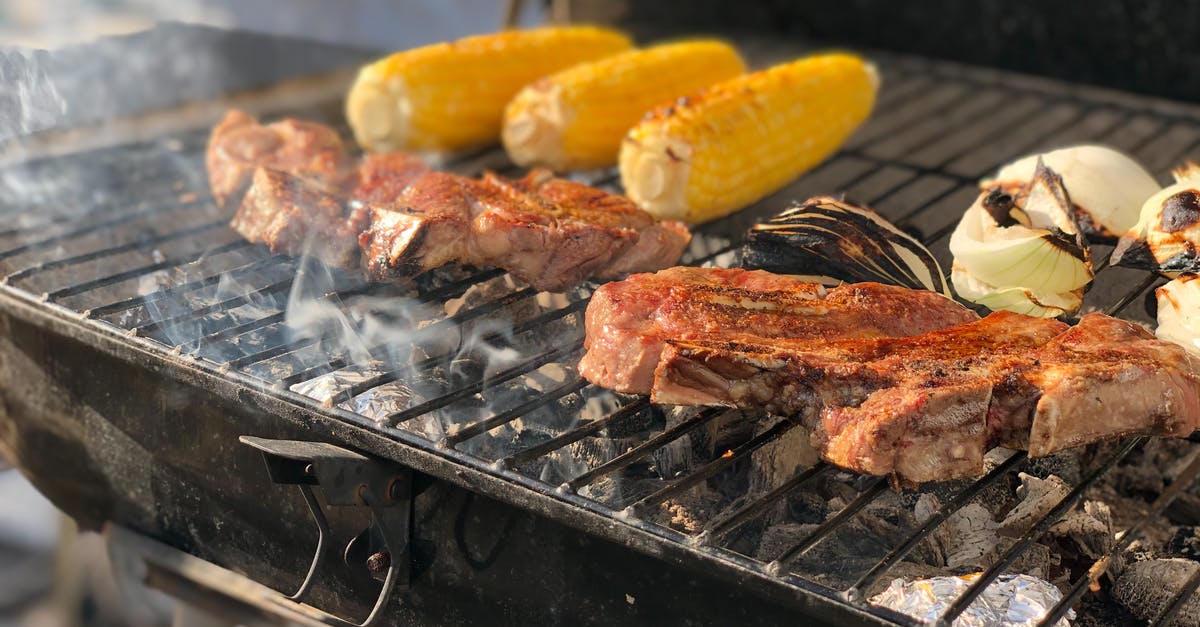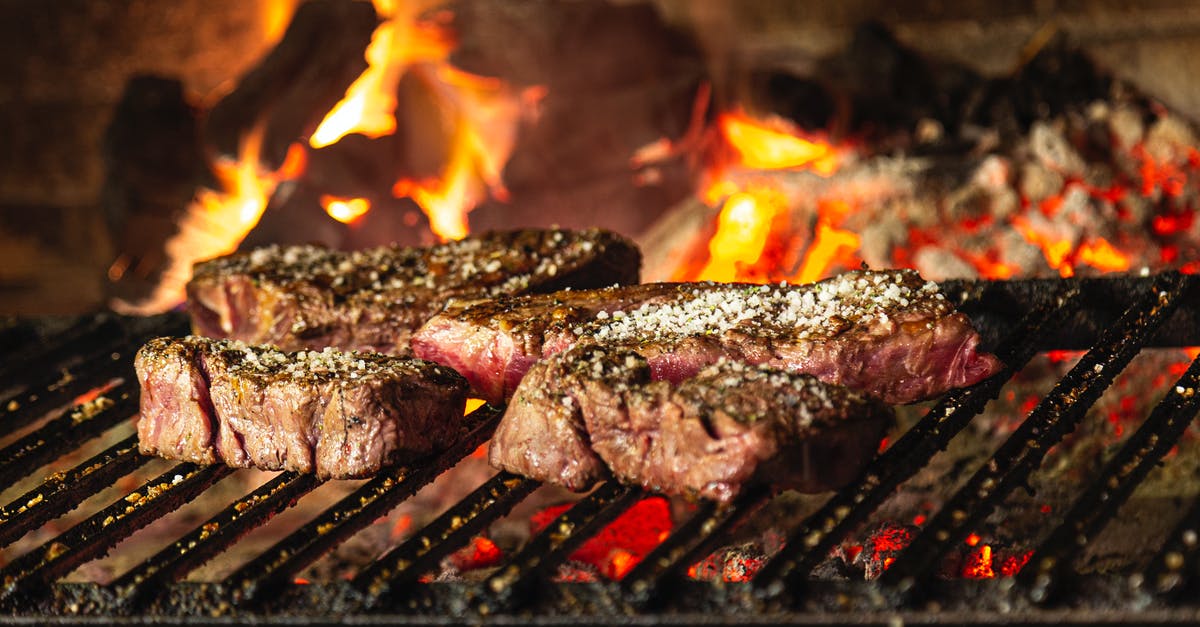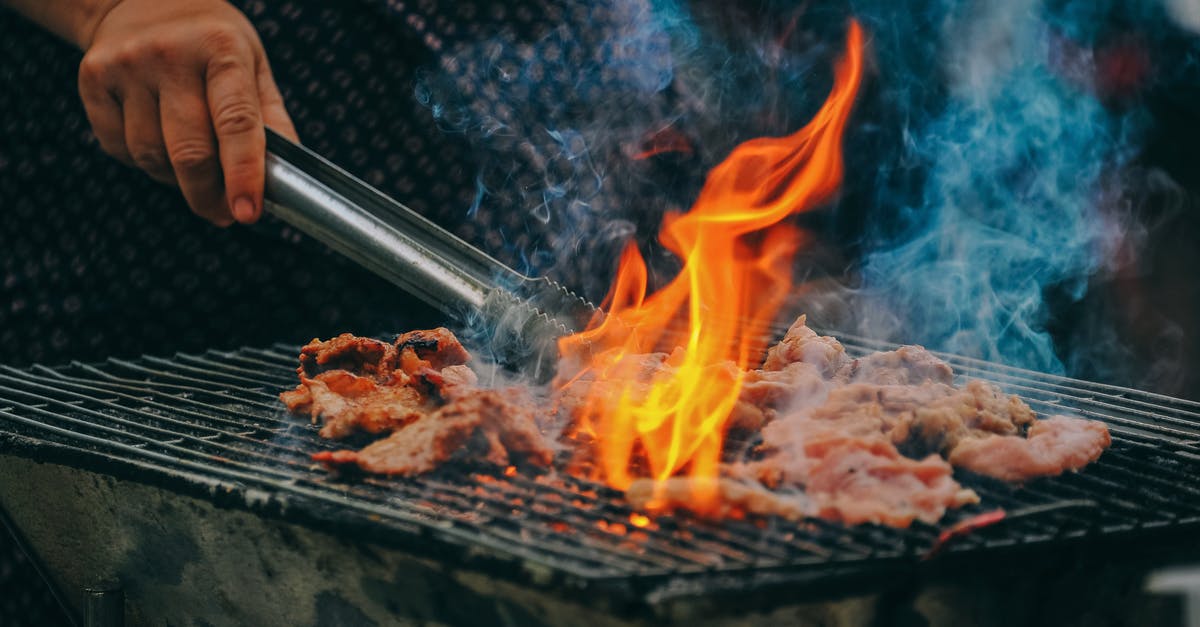How do I adapt to grilling without a lid?

If a recipe explicitly asks to grill with the lid on (for example this jerk chicken), but I'll be grilling on a grill without a lid on one of those ubiquitous rectangular park grills, how should I adapt?
I know I'll need more turning to get more even heat, but is there anything else I should do?
Best Answer
While if you have the opportunity to improvise a lid I recommend you do so as per the other answers, however it isn't always possible. I have unexpectedly been thrust into the "grill master" role when I've shown up to parties and the charcoal is hot, food expensive, and nobody but me knows how. In situations like this you have to do the best you can with what you have, and sometimes you won't have a lid or anything you can use as one.
The reasons you want a lid are that it evens the heat out, and reduces the oxygen supply to the fire which cools things down a bit and reduces flare-ups. Without a lid you will get a hotter temperature at the base of the grill and much cooler temperatures above, with fat having a much greater tendency to flare. You can still get good results through making good choices of what to cook, and good technique. Bad technique will lead to food that is burnt to a crisp on the outside and raw in the middle.
There are some foods that you don't need a lid for, in fact you shouldn't use one, like thin to medium cut steaks. Other foods like burgers you can use a lid or not and still get a good result. So part of your success will come from choosing the right things to cook. Thinner is better, as is picking foods that don't necessarily have to be cooked through.
Some food you just can't grill without a lid. Avoid anything that requires long, indirect heat like legs of lamb or roasting joints.
Some food is best cooked with a lid, but you can get good results without one, like chicken and sausages. Your main problem is heat control, and flaring. Chicken and sausages need longer cooking temperatures, so the goal is to cook them through without burning the outside, you can do this by keeping them around the edge of the charcoal where they get enough heat, and dripping fat won't hit the coals and flare up. Turn them often, like once a minute to keep them from burning. If they are getting close to done and they don't have enough char then you can move them to the center of the grill for a bit. It also helps to have some sort of baste to coat them with to keep them moist like bbq sauce or a marinade. With sausages you can cheat a bit by slicing them down the long way and cooking them flat a few minutes over high heat.
If you are cooking different foods at the same time, like burgers, sausages, and chicken then separate your grill into zones. Burgers get high heat, sausages medium, and chicken low. If you want to cook mostly food that needs a medium to low heat then you will get a lot of mileage from arranging your charcoal intelligently, like in a long strip down the middle of the wide part of the grill, or in a square grill in a torus shape. This will give you much more area of your grill with the temperature you need.
Really important for lidless grilling is a spray bottle full of water to put out flare-ups, a mist sprayed on the base of the flare works magic and it won't kick up ash all over your food.
Pictures about "How do I adapt to grilling without a lid?"



How To Light a Grill the Right Way
More answers regarding how do I adapt to grilling without a lid?
Answer 2
I use a big terra cotta flower pot, turned upside down. Buy an unused one at the hardware store for less than 20 bucks. Excellent heat regulation. Also great for doing roasts in the oven at home, smoked meats, etc.
Answer 3
There is no good reason to adapt to going lidless, make a lid! If you've got a lid to a roasting pan or whatever, use that. Otherwise, just use a big stainless steel mixing bowl. It'll be fine, just be sure to have good oven mitts/gloves. A cast iron skillet or Dutch oven would work well too.
The shape of the grill hardly matters. Just make sure that your "lid" is over the hot portions of the grill. Heat travels up, not so much sideways.
Answer 4
GdG gives a lot of good information, but one other thing to consider about lidded vs. lidless grilling is the humidity -- with the lid down, you'll have more moist air than with the lid up.
For sausages, you can start the cooking in a bath (disposable aluminum pans work well); either water, or cook 'em in beer or other flavorful liquid. Once they're cooked through, you can get some grill marks on them.
For chicken, You can add some humidity by placing the pan down in the coals, and then cook the chicken above it. This can also help to prevent flare ups for fattier pieces, as the fat drips into the water, rather than onto the coals.
Answer 5
Because it is an open air grill, you'll just have to be mindful of the oxygen supply that gets to your charcoal. On a kettle grill, for example, the lid helps control flare-ups, because you are limiting the oxygen supply to the cooking chamber, which keeps the coals more at a smoldering level than a flaming one. When cooking in open air, however, there is plenty of oxygen available. So adding fuel (drippings from your meat) to the fire will cause the flame to surge and singe your meat. On that note, you should also be aware that your fire will be hotter over the coals than it would be when using a lid, if the amount of charcoal used is constant between the two scenarios. You can resolve these potential issues by either putting the food further than normal from the heat source, or by using less fuel (or some combination of both).
Answer 6
I cover whatever I’m cooking with aluminum foil when cooking without a lid. I shape it into a tent and place it over lets say a chicken. A Disposable aluminum roasting pan works too.
Sources: Stack Exchange - This article follows the attribution requirements of Stack Exchange and is licensed under CC BY-SA 3.0.
Images: Dimitri C, Malte Luk, Gonzalo Guzman, Min An
